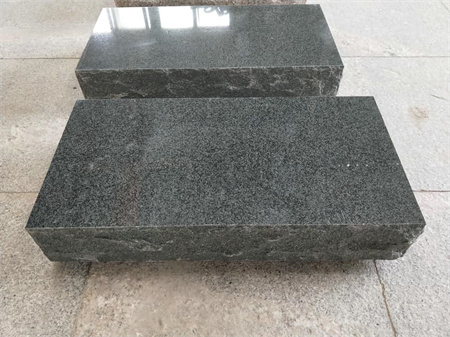The Durability of Granite in Frost-Prone Areas

The Durability of Granite in Frost-Prone Areas
Granite, one of the most ancient and resilient stones, has been a preferred material for building and landscaping for centuries. Its striking appearance, with rich veins and granular texture, combined with its exceptional durability, has made it a popular choice for everything from monuments to countertops. But what happens when granite is exposed to the harsh conditions of frost-prone areas? Is this timeless stone as impervious to the forces of nature as it appears?

Granite is an igneous rock, formed over millions of years from the cooling and crystallization of magma beneath the Earth’s surface. This process results in a stone that is incredibly dense and strong, with a low porosity rate. Its natural composition of quartz, feldspar, and mica gives it a superior resistance to weathering and mechanical stress. Granite’s ability to withstand heavy pressure, high temperatures, and even mild chemical reactions makes it an excellent candidate for use in construction and landscaping, even in areas that experience freezing temperatures.
However, the real test for granite in frost-prone regions comes from a phenomenon known as “freeze-thaw cycling.” This occurs when water enters the microscopic pores of the stone, and during freezing conditions, the water expands as it turns into ice. As temperatures rise and the ice thaws, the water contracts. Over repeated cycles of freezing and thawing, this expansion and contraction can cause the stone to fracture or spall, creating visible damage over time. While granite is relatively resistant to this process compared to many other stones, it is not entirely immune.
The key to granite’s resilience in freeze-thaw conditions lies in its composition and density. Stones with lower porosity are less likely to absorb significant amounts of water, which limits the potential for expansion during freezing. Granite, being a low-porosity stone, is less prone to absorbing moisture than more porous materials like limestone or sandstone. This makes it a better choice for cold climates, where freeze-thaw cycles are common. Additionally, the crystalline structure of granite means that any cracks or fractures that do develop tend to be less severe than those found in softer, more porous stones.
However, not all granite is created equal. The durability of granite in frost-prone areas can vary depending on its origin. For instance, granite from regions with high silica content tends to perform better in freeze-thaw conditions than granite with more feldspar or mica, as these minerals are less resistant to weathering. Therefore, when choosing granite for projects in cold climates, it is crucial to select material that has been tested for its frost resistance. Manufacturers often conduct freeze-thaw testing to assess how well the stone will hold up under harsh conditions, giving buyers confidence in their choice of material.
Another important factor influencing granite’s durability in frost-prone areas is its installation and maintenance. Even the toughest stone can be compromised if it is not properly sealed or installed. Sealing granite countertops, for example, helps to prevent moisture from penetrating the stone’s surface, reducing the likelihood of damage from freeze-thaw cycles. In outdoor settings, such as walkways, patios, or building facades, proper drainage is essential. Ensuring that water does not pool around granite surfaces or that water can escape quickly can minimize the risk of water seeping into the stone and freezing.
While granite stands out for its durability in cold climates, it’s important to consider alternatives for certain applications. Marble, for example, is far more susceptible to damage from freeze-thaw cycles and is better suited for temperate climates. Other stones, like slate or sandstone, may also be more vulnerable to freezing and thawing due to their higher porosity and softer structure. As such, granite remains one of the best choices for those looking to create long-lasting structures and landscapes in frost-prone regions.
In conclusion, granite’s durability in freeze-thaw conditions is impressive, but not invincible. Its low porosity and dense composition make it an ideal material for cold climates, though the specific type of granite, its installation, and ongoing maintenance all play critical roles in its long-term performance. When properly selected, installed, and cared for, granite can thrive even in the harshest frost-prone environments, continuing to provide both beauty and functionality for generations to come.